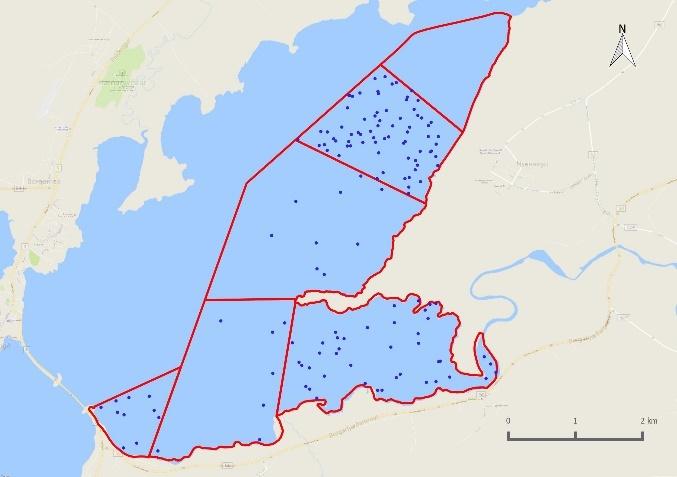
2 minute read
Common Redshank
Common Redshank
Tringa totanus Stelkur
Redshank were recorded on almost every survey between 28th March and 25th September, and showed a bimodal peak, with a spring peak of 527 birds on 24th April, and an autumn peak of 1,206 on 24th July. There were fewer than 300 birds recorded on each survey during May and June before an influx on 6th July, when numbers rose to 821 birds. There followed a weekly increase in numbers until 24th July.
On 24th July, at 19:15, a flock of 270 Redshank were observed departing from a high tide roost, gaining considerable altitude and flying in a south easterly direction across the Brekkufjall mountain (c. 1.5 km away) and out of sight, presumably on migration.
Redshank were distributed throughout the survey area but favoured the southernmost three subsites during low tides (Grjóteyrarklakkur (Est 1), Kistufjörđur (Est 2), and Flæðhöfðasker (Est 6)), and Kistufjörđur (Est 2) during rising tide surveys. While larger numbers occurred during autumn, the patterns of distribution during spring and autumn were broadly similar. Redshanks were almost exclusively recorded as foraging during low tide surveys, and were recorded as both foraging and roosting during rising tide surveys. Redshank were the second most numerous breeding wader (after Snipe) in the Andakíll Ramsar site (Tierney & Tierney 2020)
Figure 3-81.Number of Tringa totanus recorded during weekly low tide and rising tide estuarine surveys in the Andakíll Ramsar site between 12th March and 25th October 2017.
Number of individuals 1400 1200 1000 800 600 400 200 0 Low-tide Rising-tide

10 11 12 13 14 15 16 17 18 19 20 21 22 23 24 25 26 27 28 29 30 31 32 33 34 35 36 37 38 39 40 41 42 43 Mar Apr May Jun Jul Aug Sep Oct Week number and month
(a) Low tide (b) Rising tide
Figure 3-82. Relative abundance of Tringa totanus during weekly (a) low tide and (b) rising tide estuarine surveys in the Andakíll Ramsar site between 12th March and 25th October 2017. Dots are randomly positioned within each subsite. While each dot refers to a single bird, it refers to the bird’s presence in that subsite only, and not the bird’s actual location.

Figure 3-83. Relative abundance during (a) spring and (b) autumn of Tringa totanus counted on twiceweekly estuarine surveys in the Andakíll Ramsar site in 2017. Spring = 12th March - 7th June; Autumn = 12

(a) Spring (b) Autumn

th June - 25th
October. The number of dots in each subsite refers to the total number of bird-records (from weekly low tide and rising tide surveys) in spring and autumn, adjusted for the length of the season, and reflects the species’ abundance in that season, not the specific location of birds.
Figure 3-84. Proportion of foraging and roosting Tringa totanus during weekly (a) low tide and (b) rising tide estuarine surveys in six subsites in the Andakíll Ramsar site between 12th March and 25th October 2017.

(a) Low tide (b) Rising tide












